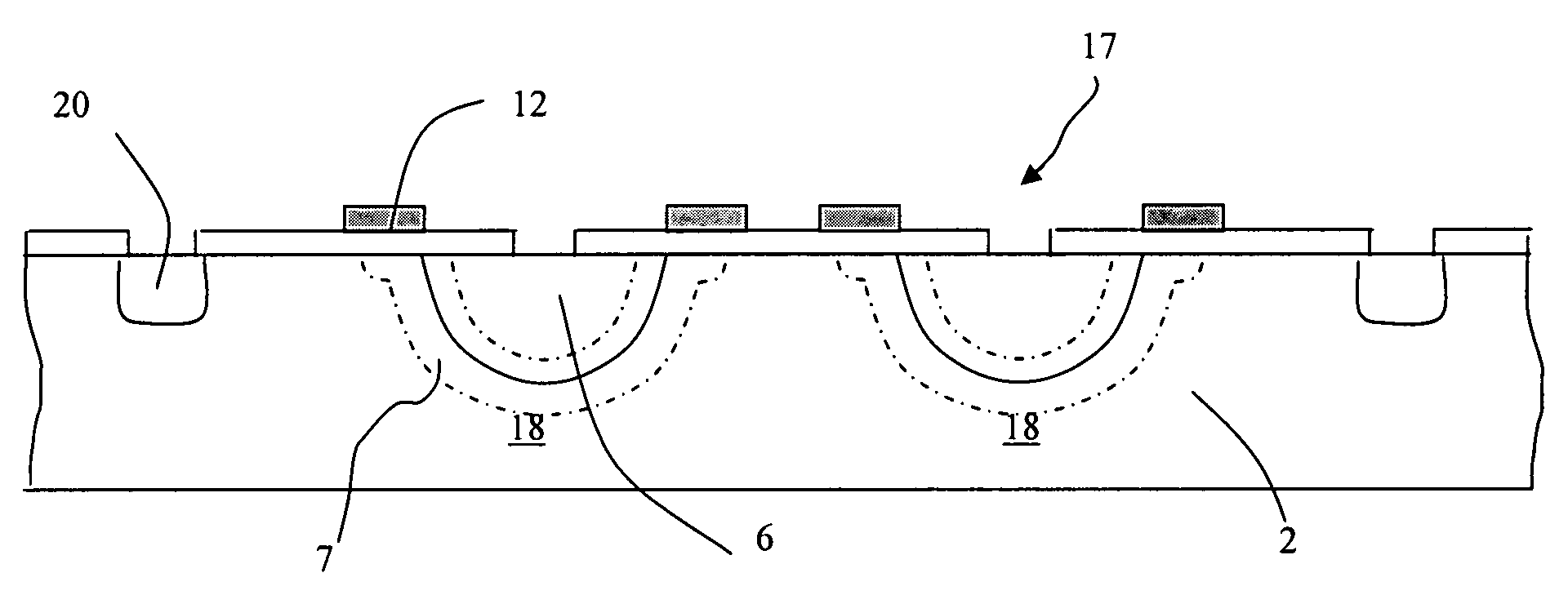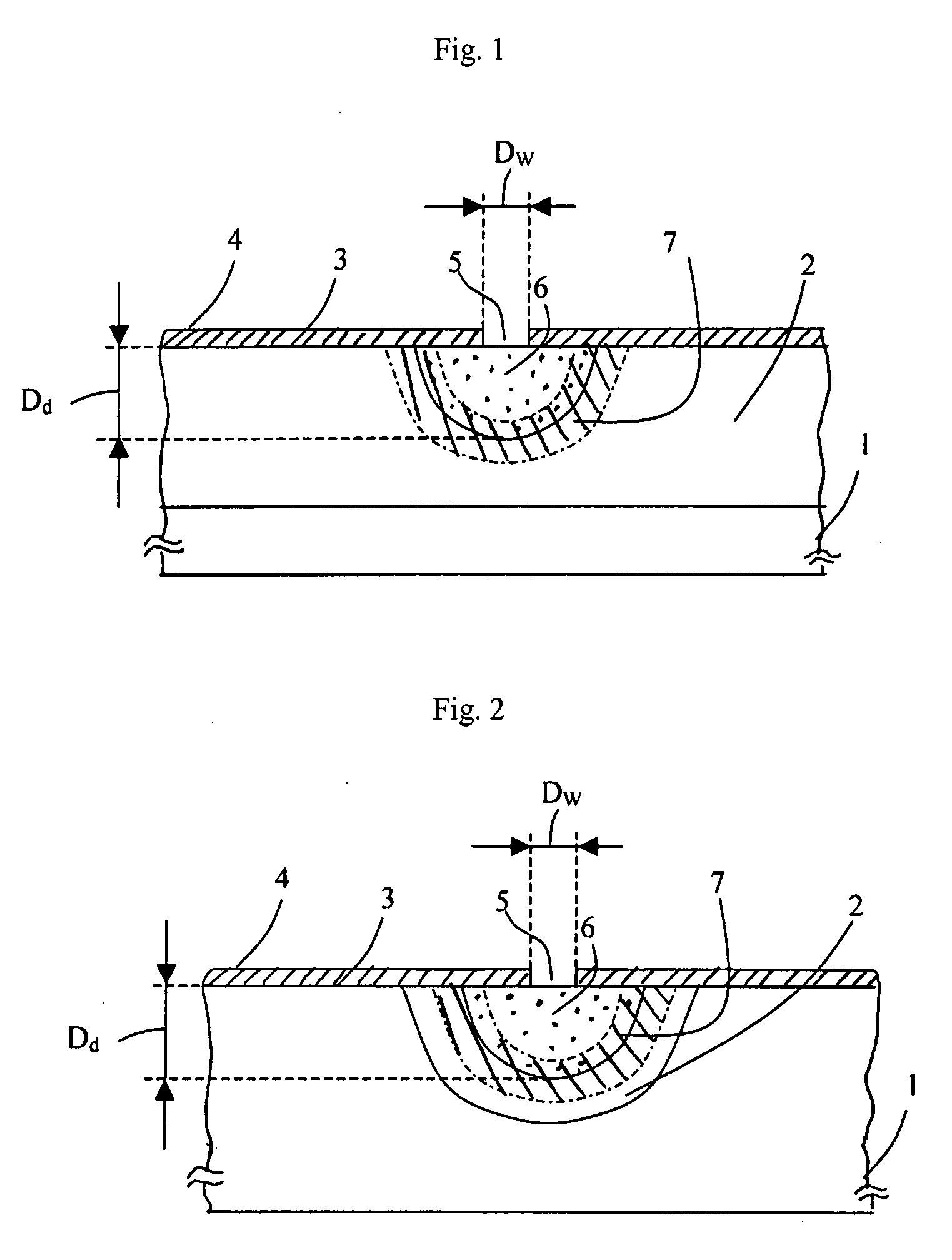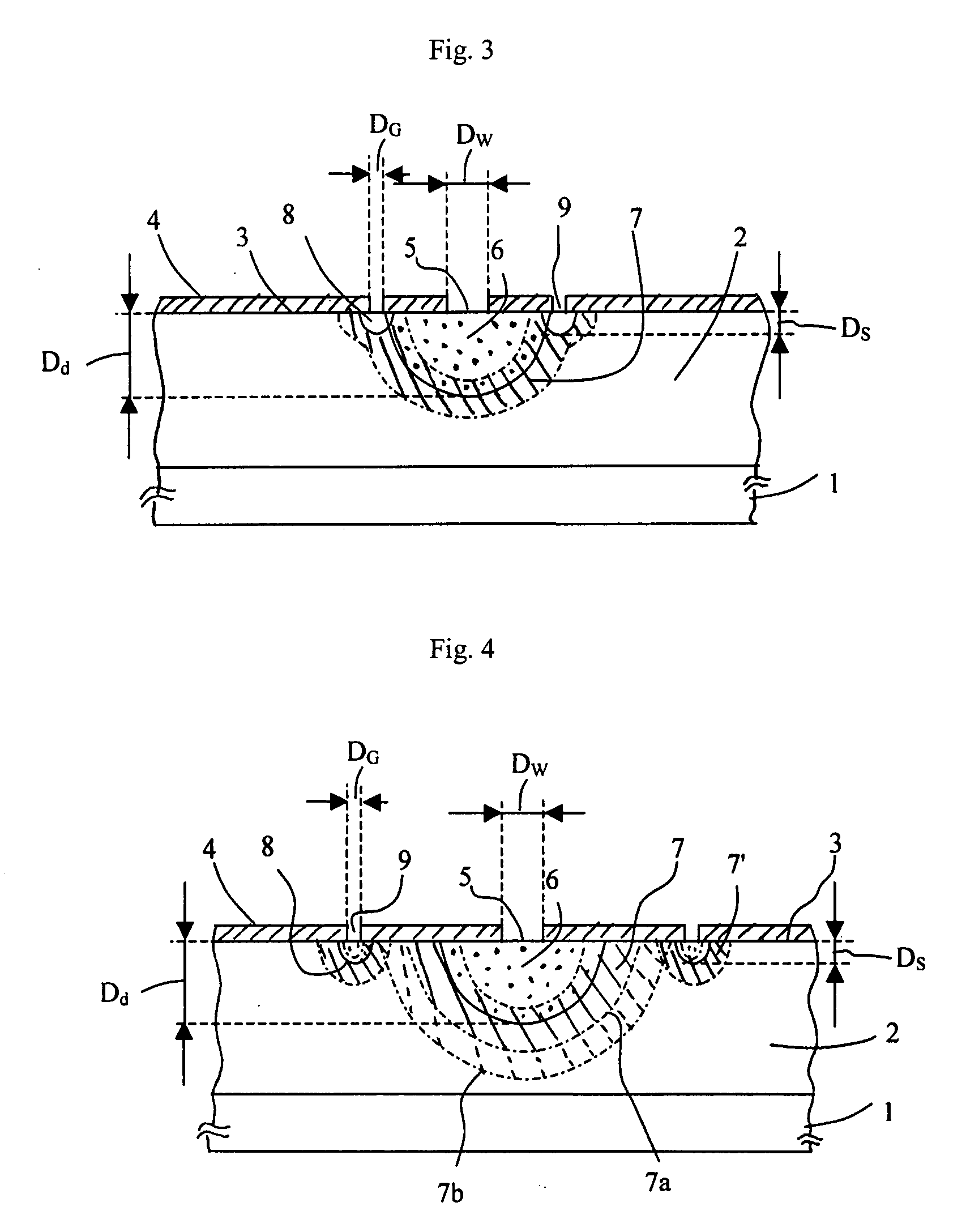Semiconductor Photodiode and Method of Making
a technology of semiconductors and photodiodes, applied in the field of semiconductor photodiodes, can solve the problems of small high cost, and large volume of products, and achieve the effect of improving the fill factor of photodiodes and reducing the cost of production
- Summary
- Abstract
- Description
- Claims
- Application Information
AI Technical Summary
Benefits of technology
Problems solved by technology
Method used
Image
Examples
Embodiment Construction
[0030]The photodiode according to the invention has a unique structure designed with the intention to achieve the same electrical field throughout the whole pn-junction so that breakdown occurs with the same probability at any place of the pn-junction. This is achieved with a three dimensionally symmetrical structure, namely a hemispherical structure. The photodiode is preferably manufactured in a standard CMOS technology having high voltage capability. Such a CMOS technology comprises p-doped and / or n-doped regions with deep diffusion of e.g. 5 micrometers or a for example epitaxially grown layer of approximately uniform doping. FIG. 1 illustrates the process steps for making a pn-junction having approximately this structure.
[0031]FIG. 1 shows a cross section of a semiconductor wafer 1. The semiconductor wafer 1 or at least a region 2 or layer below the surface 3 of the wafer 1 consists of semiconductor material of a first conductivity type. Preferably, the doping and hence conduct...
PUM
 Login to View More
Login to View More Abstract
Description
Claims
Application Information
 Login to View More
Login to View More - R&D
- Intellectual Property
- Life Sciences
- Materials
- Tech Scout
- Unparalleled Data Quality
- Higher Quality Content
- 60% Fewer Hallucinations
Browse by: Latest US Patents, China's latest patents, Technical Efficacy Thesaurus, Application Domain, Technology Topic, Popular Technical Reports.
© 2025 PatSnap. All rights reserved.Legal|Privacy policy|Modern Slavery Act Transparency Statement|Sitemap|About US| Contact US: help@patsnap.com



